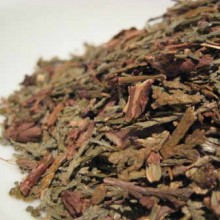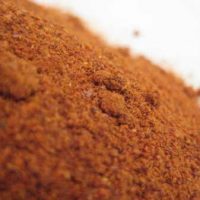Douglas Fir (Pseudotsuga douglasii) is a fir native to the Pacific Northwest of North America, occurring at altitudes of sea level to 1,800 m. It is a large evergreen coniferous tree growing to 40-70 m (exceptionally 80 m) tall and with a trunk diameter of up to 2 metres.
The leaves are needle-like, flattened, 3-6 cm long and 2 mm wide by 0.5 mm thick, glossy dark green above, and with two green-white bands of stomata below, and slightly notched at the tip. The leaf arrangement is spiral on the shoot, but with each leaf variably twisted at the base so they all lie in two more-or-less flat ranks on either side of the shoot. The cones are 6-12 cm long and 3.5-4.5 cm broad, with about 100-150 scales; the scale bracts are short, and hidden in the closed cone. The winged seeds are released when the cones disintegrate at maturity about 6 months after pollination.
There are two varieties, probably better treated at subspecies rank though not yet formally published as such:
Abies grandis var. grandis known as the Coast Grand Fir. It grows mainly in coastal lowland forests, at sea level to 900 m altitude, from Vancouver Island and coastal British Columbia, Canada, south to Sonoma County, California, United States. A large, very fast-growing tree to 70 m tall. Foliage strongly flattened on all shoots. Cones slightly narrower (mostly less than 4 cm broad), with thinner, fairly flexible scales. Tolerates winter temperatures down to about -25° to -30°C; growth on good sites may exceed 1.5 m per year when young.
and
Abies grandis var. idahoensis known as the Interior Grand Fir. Grows manly in forsets of the interior at 900-1800 m altitude, on the east slope of the Cascades in Washington and northern Oregon and in the Rocky Mountains from southeast British Columbia south to central Idaho, northeast Oregon and western Montana. A smaller, slow-growing tree to 40-45 m tall. Foliage not strongly flattened on all shoots, the leaves often raised above the shoot, particularly on upper crown shoots. Cones slightly stouter (mostly over 4 cm broad), with thicker, slightly woody scales. Tolerates winter temperatures down to about -40°C; growth on good sites not exceeding 0.6 m per year even when young.
Grand Fir is very closely related to White Fir, with the interior variety idahoensis particularly similar to the western forms of White Fir from western Oregon and California, intergrading with it where they meet in the Cascades of central Oregon.
Reorted Attributes of Douglas Fir Essential Oil:-
Traditional and Emotional uses reportedly include:-
This is a popular although much rarer oil than Siberian Fir and is used to bring out masculine, attributes to mens fragrances, bath preparations, air fresheners, herbal, moss, soaps, and shaving creams. Fir needle is reported to help with arthritis, bronchitis, colds, coughs, flu, muscle aches, rheumatism, sinusitis and, of course, aromatically is very evocative.
Douglas Fir Essential Oil Blends Well With:-
Cedar Leaf, all Citrus oils, Galangal, Galbanum, Geranium, Ginger, Juniper Berry & Leaf, Labdanum, Laurel Bery & Leaf, Lavandin all the Lavenders.
Cautions:-
May cause skin irritation in some individuals if used in high concentrations.






